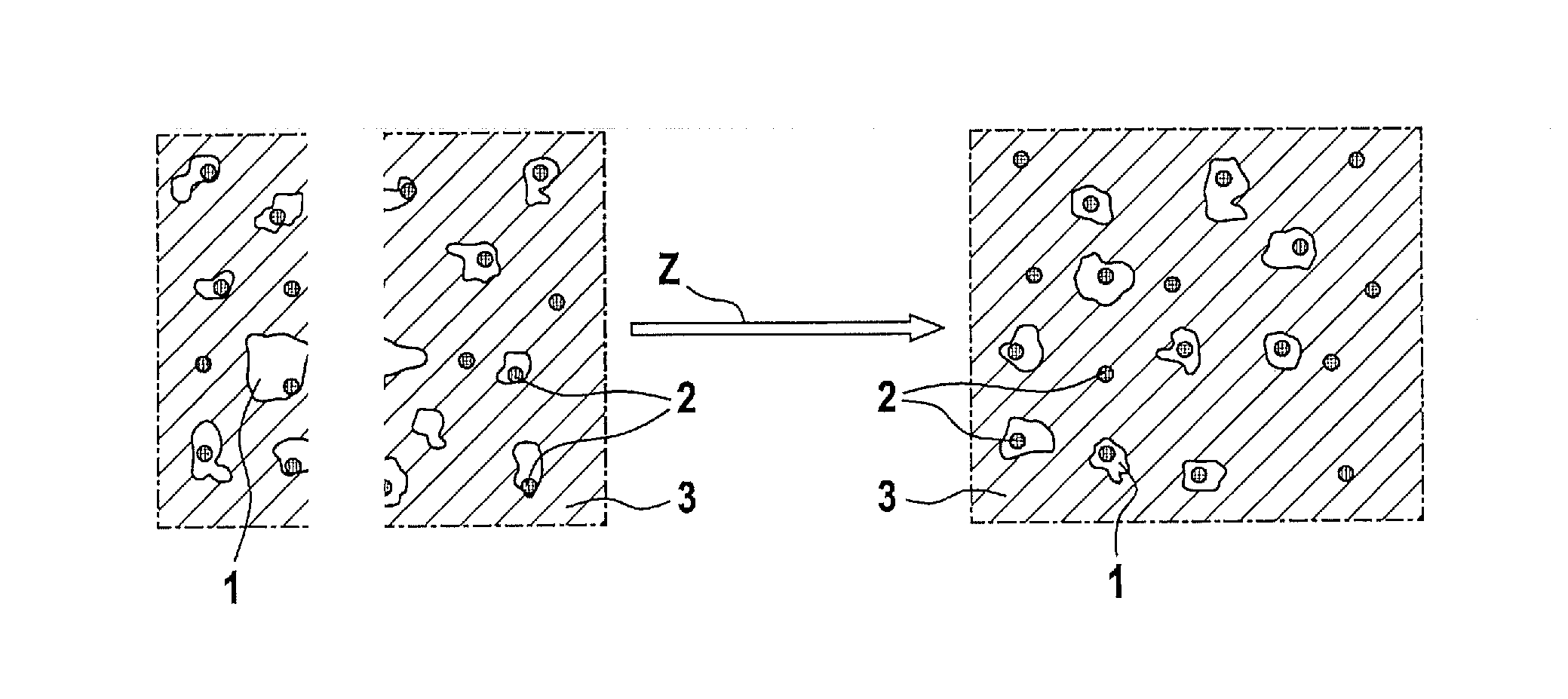Cathode composition
a technology of cathode composition and alkali sulfur, which is applied in the direction of non-metal conductors, cell components, conductors, etc., can solve the problem of typical only achieving a cycle number, and achieve the effect of reducing the formation of sulfur agglomerates advantageously
- Summary
- Abstract
- Description
- Claims
- Application Information
AI Technical Summary
Benefits of technology
Problems solved by technology
Method used
Image
Examples
example 1
Manufacturing of a Sulfur-Polyacrylonitrile Composite Material
[0043]15 g elementary sulfur and 5 g polyacrylonitrile were mixed and heated to 330° C. for 6 hours. The sulfur-polyacrylonitrile composite material thus manufactured had 40 wt.-% sulfur.
example 2
Manufacturing of a Cathode Composition
[0044]5 g elementary sulfur and 1 g of the sulfur-polyacrylonitrile composite material from Example 1 were stirred together with N-methyl-2-pyrrolidinone (NMP) in a SpeedMixer at 10,000 RPM for 20 minutes. 1 g carbon black (Super-P Li from Timcal) was then added. After a further 20 minutes of stirring time, 1 g graphite and 2 g PVDF were added. The mixture was stirred for a further 120 minutes.
example 3
Manufacturing of a Cathode
[0045]The mixture from example 2 was applied using a coating knife to an aluminum foil. The cathode was then dried for two hours at 60° C. on a heating plate. The assembly was subsequently transferred into a vacuum furnace and dried for a further 12 hours at 60° C.
[0046]The resulting cathode was installed in a lithium-sulfur cell. The lithium-sulfur cell thus manufactured had a homogeneous sulfur distribution during the charging procedure.
PUM
 Login to View More
Login to View More Abstract
Description
Claims
Application Information
 Login to View More
Login to View More - R&D
- Intellectual Property
- Life Sciences
- Materials
- Tech Scout
- Unparalleled Data Quality
- Higher Quality Content
- 60% Fewer Hallucinations
Browse by: Latest US Patents, China's latest patents, Technical Efficacy Thesaurus, Application Domain, Technology Topic, Popular Technical Reports.
© 2025 PatSnap. All rights reserved.Legal|Privacy policy|Modern Slavery Act Transparency Statement|Sitemap|About US| Contact US: help@patsnap.com


